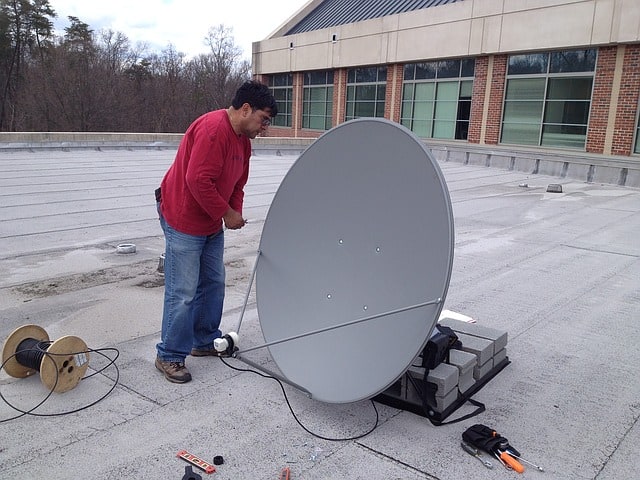From Filament to Form: A Comprehensive Guide to 3D Printing Materials
Regarding bringing ideas to life, 3D printing plays a pivotal role. It all starts with choosing the right material, which can range from different plastics to metals, each with its unique properties. This guide explores deep into the world of 3D printing materials, shedding light on the most popular choices and how they compare regarding properties and applications.
Understanding the characteristics of different filaments is necessary, if you’re aiming to improve the quality of your prints or selecting the best material for a new project. With insights from experts, this guide not only helps you navigate through the options but also offers practical tips for making the most out of your 3D printing trys.
From the flexibility of PETG to the durability of polycarbonate, the curiousity to from filament to form is both interesting and complex. This complete guide is your ally, designed to simplify the selection process and open up the full potential of your 3D printer.
Key Takeaways
- Explores a wide range of 3D printing materials, including popular plastics and metals, and compares their properties and applications
- Provides a framework for selecting the right material for your project, enhancing print quality and functionality
- Includes expert tips for printing with different materials, from standard PLA and ABS to specialized filaments like PETG and flexible polymers
- Covers the fundamentals of Fused Deposition Modeling (FDM) technology, the most common method for 3D printing with filament
Overview of 3D Printing Materials
When I jump into the world of 3D printing, I find myself amazed at the variety of materials I can choose from. It’s not just about plastic anymore. I’ve learned that for different projects, I might need different types of filaments. Some materials are strong and tough, perfect for making tools or parts that need to last. Others are flexible, which is great for items that need to bend without breaking.
Each material has its own special features too. Think about how cool it is that there are filaments that can resist high temperatures or even block UV light. And if I want to make something that looks and feels like wood or metal, there are filaments for that too. It’s like having a superpower to create almost anything I can imagine.
Choosing the right filament is a big part of getting my projects to turn out the way I want. I learned that it’s not just about the material itself, but how it works with my printer. Some materials need higher temperatures to print correctly, while others might require a special kind of surface to stick to the print bed. Getting it right means my prints are strong, detailed, and look great.
Types of 3D Printing Materials
As someone deeply involved within the sphere of 3D printing, the pivotal role of materials cannot be overstated. Looking closer into this dynamic field, I’ve learned that the choice of materials directly influences not just the quality but also the functionality of the finished print. From the strongness of PLA to the flexibility of TPU, each material brings something unique to the table. For more insights, I recommend this expert guide on selecting the best 3D printer filament.
My curiousity to has exposed me to a variety of materials, each suited for specific applications. ABS, for instance, is my go-to for durable parts that can withstand high temperatures, while PETG offers clarity plus resistance, ideal for functional aesthetics. Understanding these subtle differences has been key. This mastery over material properties allows me to challenge the limits of my projects, achieving results that were once thought impossible.
Also, amidst the expansive material spectrum, innovative filaments like wood-infused or metal-filled materials have caught my eye. They not only offer a distinctive finish but also broaden the horizons of creativity and application in 3D printing. Balancing between material strengths and weaknesses, I navigate through projects, always aiming to improve both form and function of the final print.
Plastics and Polymers
I often experiment with different filaments in my 3D printing projects to explore creative possibilities. Each type of filament offers unique characteristics that can remarkably impact the final outcome of my designs. Whether I’m aiming for durability, flexibility, or a particular aesthetic, understanding the properties of each material is necessary.
When I began diving into 3D printing, I quickly learned that thermoplastics are a go-to for many hobbyists and professionals alike. These materials can withstand repeated melting and hardening, which makes them ideal for repetitive design processes. Plus, the fact that they can be melted down and reused aligns with my goal of practicing sustainability in my projects. For more in-depth information, I found a helpful article on materials used in 3D printing that expanded my understanding of these materials.
Finding the reversible process of thermoplastics, where no chemical bonding occurs, opened up a new world of possibilities for me. It meant that I could experiment without worrying about wasting materials. Conversely, thermoset materials, which cannot be remelted once cured, taught me to plan more carefully and consider applications where dimensional stability under heat is a priority.
The curiousity to through learning about different materials has been incredibly rewarding. It has not only broadened my technical skills but also pushed me to think creatively about how I can use each material’s unique properties in my designs.
Metal Filaments
I’ve had the unique experience of working with advanced materials that blend metal powder with a plastic base. This innovative combination produces prints that not only look metallic but offer an added weight and finish akin to real metal parts. It’s interesting to see these filaments create objects that can range from artistic sculptures to functional mechanical components.
One significant advantage I’ve found is the ability of the printed objects to be polished or finished further, enhancing their metallic appearance. This attribute opens up new avenues for use in jewelry making, decorative items, and even in sectors requiring prototypes that closely mimic metal parts. The versatility and range of applications these materials offer is truly groundbreaking in the field of 3D printing.
Another aspect I value is the sustainability these materials offer. Considering that the filaments contain a significant portion of metal, they introduce a recyclable component to 3D printing that wasn’t as feasible before. This factor is necessary for me as I’m always looking for ways to reduce my environmental impact while still pushing the boundaries of what’s possible in 3D printing.
Properties and Applications
In my curiousity to with 3D printing, I’ve learned that choosing the right material is key. Each material, from plastics like PLA and ABS to metals, has unique traits. For instance, PLA is great for indoor items since it’s biodegradable. ABS, conversely, is tougher and better for items used outdoors. Then, there’s PETG, which is both strong and food safe.
Flexible materials like TPU opened a whole new world for me. They let me print squishy and bendable objects. It was like finding a secret power. But, with great power comes great responsibility. I had to learn about bed temperatures and printing speeds to get it right.
For those looking to venture into more specialized projects, materials like nylon and composite filaments add a layer of complexity and capabilities. They pave the way for printing functional parts and prototypes that require durability and a wide range of flexibility. By understanding the functional properties and possible applications, I can make good choices for my projects, ensuring a match between the material used and the desired outcome of the final print.
Comparing Properties
I’ve finded that not all 3D printing materials are the same. Each one has unique features that make it better for different projects. For example, if I’m working on a piece that needs to be really strong and withstand heat, I’ll pick a different material than if I need something that looks great and is easy to paint.
I learned a lot by looking into how different materials react to heat and stress. Some materials can go through numerous melt and cycles, making them reusable. This is pretty cool since it means less waste. Conversely, materials that can’t be melted down again have to be just right the initial time, or they’re wasted.
In my curiousity to, I’ve also found out that the way a material sticks together layer by layer can change a lot. Some materials make parts that are strong no matter which way you bend or pull them. Others might be strong in one direction but not so much in another. This is super significant to know when I’m deciding what material to use for my 3D prints.
Applications in Different Industries
I use different filaments in 3D printing to create things for many industries. In healthcare, I make models of organs to help doctors plan surgeries. This makes operations safer and quicker. I also create custom prosthetics that fit perfectly and cost less.
Within the sphere of fashion, I design unique jewelry and clothing. This lets designers experiment without spending too much. For custom materials, I can even use flexible filaments to make items that bend.
In engineering, I build parts for machines and vehicles. This helps companies make prototypes fast and find mistakes early. Using strong filaments, I make parts that can withstand a lot of use.
Even in education, I come in handy. I create tools and models for students to learn better. This makes complex subjects easier to understand.
Choosing the Right Material
Picking the right material for my 3D printing project feels like a necessary step. Each material brings its own set of strengths and challenges to the table. For instance, if I’m looking to print something that needs to be strong and withstand a lot of use, I might lean towards ABS plastic. It’s durable and can take a few knocks.
Conversely, if I need my project to have fine details, PLA could be the way to go. It’s known for providing a smooth finish and capturing intricate designs. Plus, PLA is biodegradable, making it a friendlier option for the environment.
Sometimes, the project may call for something a bit more flexible or even transparent. That’s when I consider using materials like TPU for flexibility or PETG for a nice blend of strength and clarity. To explore deeper into how these filaments are made, you can check out this resource. Understanding the properties of each option helps me make an good choice, ensuring the success of my 3D printing trys.
Fused Deposition Modeling (FDM)
When I look closer into the process of creating 3D printed objects, I’m intrigued by the variety of materials at my disposal. Each filament type offers a unique set of properties and applications. This array of options allows me to choose precisely the right material for my project, whether I’m aiming for durability, flexibility, or a specific aesthetic finish.
I’ve finded that understanding the behavior and properties of different filaments can remarkably improve the outcome of my 3D prints. For instance, materials like PETG are known for their strength and flexibility, making them ideal for parts that need to withstand stress. Conversely, flexible filaments open up a world of possibilities for creating objects that can bend or stretch.
Also, the process of selecting the perfect material isn’t just about the final product’s look and feel. It’s also about matching the material’s characteristics with my project’s specific needs. This understanding make definitelys that I can produce high-quality prints that stand the test of time.
Material Extrusion Process
I’ve always been intrigued by how 3D printers can turn a simple strand of material into complex objects. Let me share how it happens. Initial, I pick the type of material I want to use. There’s a huge variety out there. From hard plastics like ABS to flexible ones like TPU, the choice depends on what I’m making.
Then, my 3D printer heats the material until it’s melt. The material is pushed out in thin layers. These layers stack up to form the object I designed on my computer. It’s like drawing with a pen, except this pen draws in three dimensions.
The magic doesn’t stop with plastics. Metals can be used too, but that’s a bit more complex. For more about the materials and how they turn from filaments into forms, this guide covers it all. Knowing which material to choose can make a big difference in your project. That’s why I always consider the properties of each material before I start.
Future Trends in 3D Printing Materials
In my curiousity to with 3D printing, I’ve seen amazing materials come to life. Now, I’m excited about what lies ahead. New materials promise to transform what we can create with 3D printers. I’ve heard talks of materials that are stronger, more flexible, and even self-healing! Imagine printing parts that could repair themselves if they crack or break.
Another big thing on the horizon is sustainability. I’m looking forward to filaments made from recycled materials or even biodegradable options. This change is not just good for the planet; it opens up new possibilities for printing. For instance, we could see more medical devices printed in a way that’s safe for the body and the environment.
At last, I’m keeping an eye on smart materials. These are filaments that can change color with temperature or light, and even conduct electricity. The applications for this are endless, from functional prototypes that can sense their environment to custom wearables that light up or change with the weather.
Conclusion
Looking closer into the world of 3D printing has allowed me to uncover the vast potential and versatility of materials available, from the common PLA and ABS to the more exotic bamboo and cork-based filaments. My curiousity to through this guide has equipped me with the knowledge to select the perfect material for any project, considering factors like durability, flexibility, and aesthetic appeal. With this complete understanding, I feel confident in pushing the boundaries of my 3D printing trys, experimenting with different materials to bring my creative visions to life. The future of 3D printing is bright, and with the right material in hand, the endless possibilities.
Frequently Asked Questions
How are these 3D printed things made and produced?
3D printed objects are created layer by layer by melting filament materials like plastic or metal in a process called Fused Deposition Modeling (FDM).
What type of material filaments can be used for 3D printing?
3D printing uses filaments like PLA, ABS, PETG, Nylon, TPU, and specialized materials like wood, metal, and ceramic composites.
What is the process of filament making?
Filament making involves melting plastic pellets, extruding them into thin strands, cooling them, and winding onto spools for 3D printing.
What is 3D printing with filament called?
3D printing with filament is called Fused Deposition Modeling (FDM) or Fused Filament Fabrication (FFF).





